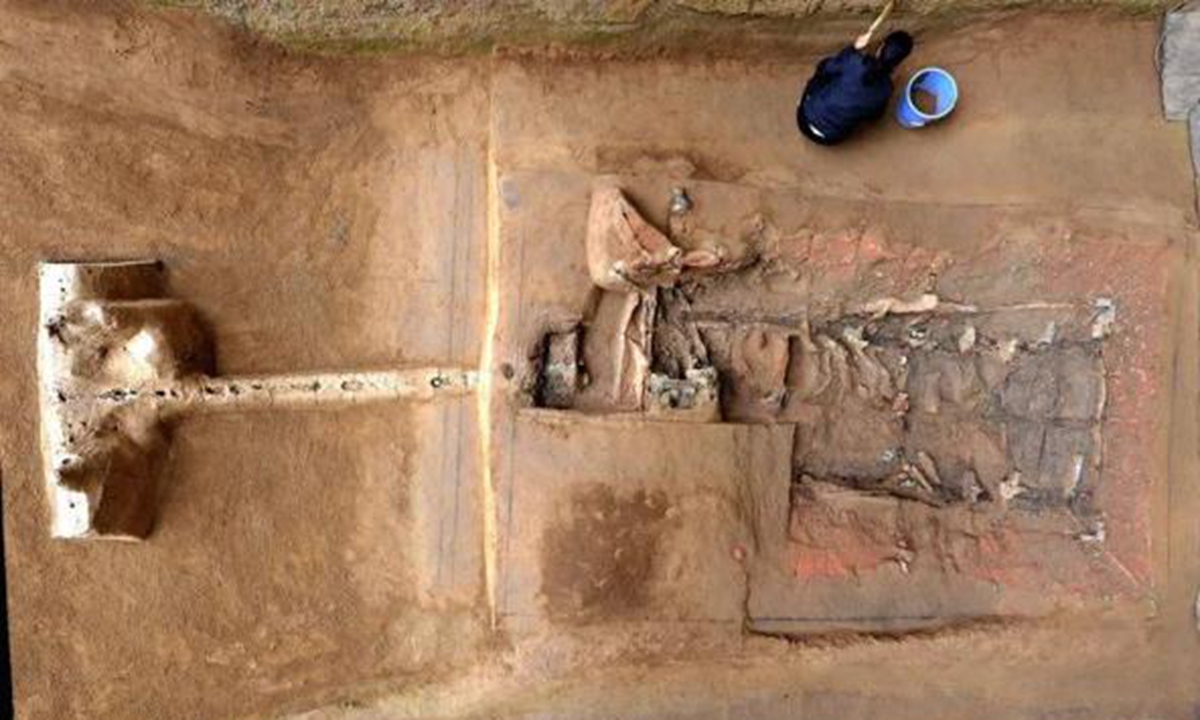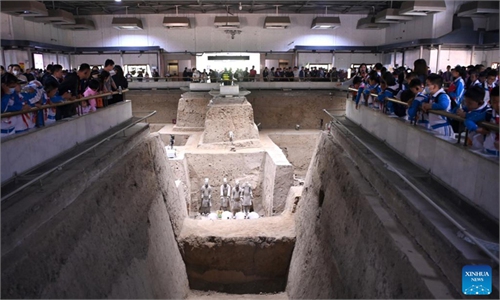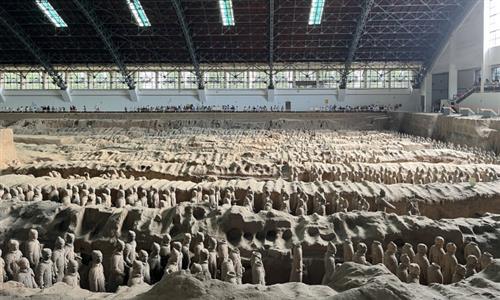ARTS / CULTURE & LEISURE
Four-wheeled carriage of China’s first emperor unearthed in Xi’an

Photo: Courtesy of Emperor Qinshihuang's Mausoleum Site Museum
Including a four-wheeled wooden carriage, a new batch of relics has recently been unearthed from Pit No.1 at the Mausoleum of Emperor Qin Shi Huang, the burial place of China's first emperor, in Northwest China's Shaanxi Province.The news about such latest discoveries was recently revealed by Emperor Qinshihuang's Mausoleum Site Museum.
The four-wheeled wooden carriage has been perfectly buried under the ground for more than 2,000 years. The total length of the carriage is 7.2 meters and its hood was found to have been painted with colorful designs.
Along with the carriage, animal remains, horse gear, and the remains of different types of wooden carriages were found scattered around the site as well.
Jiang Wenxiao, the lead archaeologist for the excavation project, revealed that the carriage may very likely have been a "hearse" that was once used to carry coffins during ancient times.
Jiang also highlighted that the four-wheeled carriage discovered along with other carriage remains has revealed a "very rare funeral tradition" during the Qin Dynasty (221BC-206BC).
"It provides us with new inspiration to look into the Qin Dynasty's funeral traditions, especially the funeral system of high-grade Qin tombs," Jiang said.
Not only the main body of the carriage, but also the bronze accessories that were used to connect the vehicle's different wooden pieces together were all kept intact.
Archaeologist Lu Zhaojun told the Global Times that the carriage's good condition may be attributed to the site that had "not been disturbed by grave robbers."
"To be able to spot the remains of a four-wheel carriage requires archaeological knowledge and a thorough excavation plan. This may have been too much of a demand for grave robbers, too," Lu noted.
Besides the carriage, a large number of relics made of pottery, bronze, jade, gold and silver were also discovered from the pit. They have unveiled the "luxurious burial tradition" of the Qin Dynasty, Lu told the Global Times.
Excavations of Pit No.1 first started in 2013. It has since proven to be a treasure trove that has constantly surprised archaeologists with unprecedented relics.
More than 200 terracotta figures and 16 terracotta horses were discovered in the pit when archaeologists conducted the third excavation of the site from 2009 to 2022.
Those terracotta figures were later discovered to have been created with unique techniques. The arms of these figures were created independently from their main bodies. Those art pieces were later connected to the main bodies using fine clay layers placed over them.
Assorted weapons such as shields for defense and sword-like offensive weapons were also discovered along with the finely made terracotta figures.


